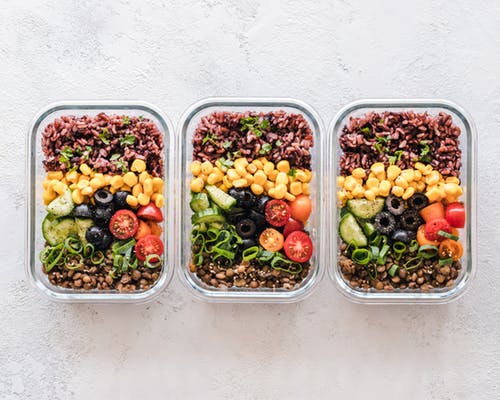By Erin Wyatt a recent ASU nutrition student
Meal prepping has been all the rage over the last few years as a way to maintain a healthy diet. Social media, particularly Pinterest, is littered with pictures of organized refrigerators and tips to make this strategy look easy and appealing. I must admit, I would often scour these pages and envy this tidy and efficient way of preparing food. The authors made it look so simple and achievable.
However, I have never tried it, it’s simply not my personality. I am an impulse food shopper and eater. On Sundays, I do not know what is going to sound good to me on Thursday and therefore would do my shopping almost every day. Enter my first child. I had always heard that parents do not have time to eat, but I never truly believed it until now. For months I would just grab what was easy to eat quickly, which were mostly snacks, or order takeout. These options are not very healthy, nor do they provide nutritious forms of energy to get through the sleep-deprived days. So I have finally crossed over into the world of meal prepping. I would like to share some of my tips for other newbies and how to get the maximum nutritional benefits out of your meals.

I find that the hardest time of day for me to eat a proper meal is lunch time. Days seem to be a blur with a newborn and sometimes snacking is all that gets accomplished. However, this leads to overeating and poor choices come dinnertime. I feel that variety is the key to avoid boredom with meal prepping. Some people like to put the same foods together for each meal, but I like to keep all the foods separate and then throw them together right before I eat them, that way I can slightly change up the ingredients or presentation each time. Below are the main staples that I have on hand to quickly put together a healthy lunch. Sometimes I make a salad, sometimes a sandwich, and other times I pop some of the ingredients in the microwave for a luxurious warm meal.
Meal Prepping Items:
- Grains
- Quinoa, farro, and whole wheat couscous last longer and stay fresher than rice
- Greens
- Spinach, arugula, and green leaf lettuce provide lots of nutrition, taste, and variety of use
- Roasted vegetables
- Roasting vegetables gives them more flavor and opportunity to add a variety of spices
- Baked chicken breasts or thighs
- Bake with different sauces to change things up*
- Canned tuna
- This can be used as a salad topper or used to make a sandwich
- Whole wheat bread
- The more fiber the better
* Be mindful of sauces and dressings, making sure they are low in fat and sugar.
As someone who is not a food planner, I can attest to the ease of this kind of “meal prepping.” Having these items on hand, really saves me from making bad decisions or from going without proper food during the day. Not only do I eat healthier, but I notice a difference in my energy level when I consume nutritious food throughout the day. In between meals, snacks can be incredibly helpful too, just make sure they are not packed with empty calories. I will leave you with some easy snack options that I reach for when I have a minute to spare. Remember, surrounding yourself with healthier food choices allows for healthier decisions.
Snacks:
- Mixed nuts or trail mix
- Hard-boiled eggs
- Apples
- Low-fat cheese
- Granola bars
- Brown rice cakes with peanut or almond butter
- For more articles with tips and tricks of healthy eating check out our Fill Your Plate Blog. For recipes that the whole family will enjoy check out our recipe section.

